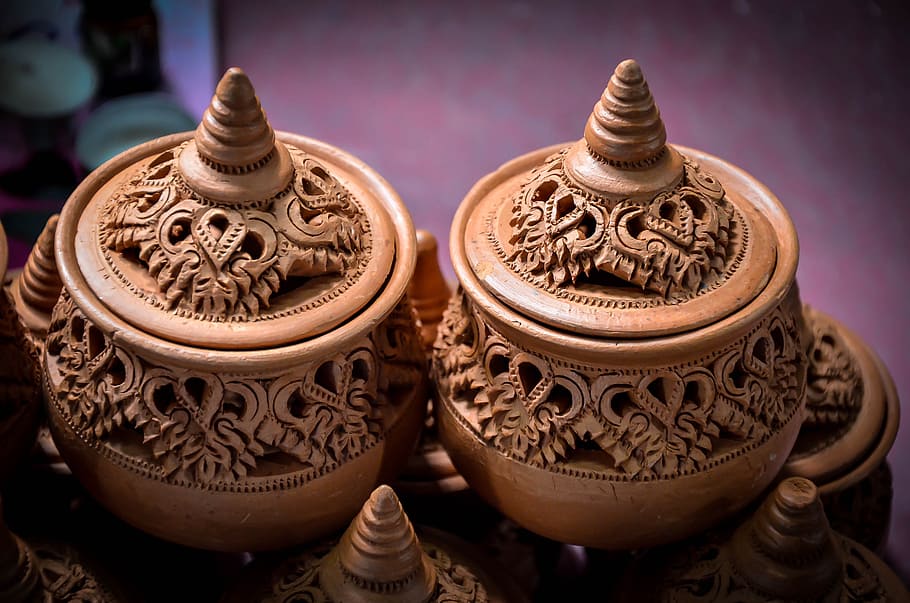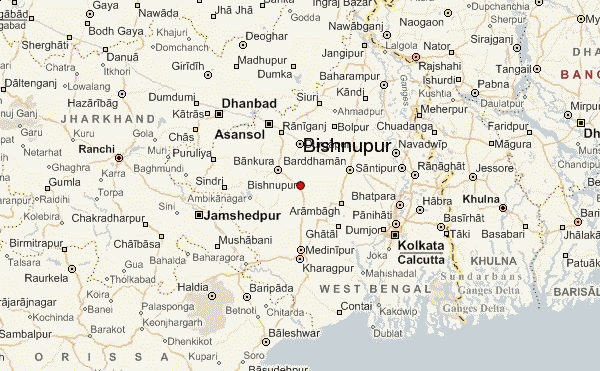The 21st century is seeing the return of old traditions and cultures with a modern twist. In this mix, many Indian practices in different areas such as fashion, technology and medicine take the well-deserved spotlight. After all, India is a land of many cultures, a mother of many inventions. The tiniest areas in this country are filled to the brim with colours, textures and festivities. One such corner in the east of India is Bishnupur, the pioneer of modern terracotta jewellery.
Terracotta jewellery is recently popular because of its rustic, ancient look. Paired with ethnic wear, it is lightweight and comfortable on the skin. There is much to know about the history and process behind this beautiful piece of jewellery.
What is Terracotta Jewellery?
Terracotta is baked, waterproof clay that has existed since the Indus Valley Civilization. Previously, this material was used to make statues of animals worshipped by the Indus Valley Civilization. These animals include elephants, peacocks etc. To this date, Indian artisans use it to make sculptures of deities. However, it has evolved over time to incorporate delicate, handmade, eco-friendly jewellery.
At first glance, terracotta jewellery does not look like clay or even earth. It is very hard to relate the humble origins of the jewellery to the final product. This is because behind a perfect piece of jewellery lies a labour-intensive process.

The Process of Making Terracotta Jewellery
Making terracotta jewellery is a long-winded process spanning many days. Due to the nature of clay, artisans need to be dexterous and gentle with the source material, all the way up to the final step.
Different types of terracotta clay (mainly thin and thick) exist. Jewellery is made by the thinner variant. It is readily mixable. In both processes, the clay goes through a thorough cleaning process by removing dust particles and keeping it moisture-free. The clay used for jewellery is specifically absorbent, usually sourced from river banks.
The artisans decided on different designs and patterns for the jewellery with rough sketches in mind. Then they use solder wire and mould it into a “U” that holds the clay together. The wire helps to mould the wet, mixed clay. This component dries in the bare sun for 2-3 days. A process called baking follows this drying. Because drying helps with external moisture whereas baking deals with internal wetness. The clay “bakes” in intense (700-900 degrees celsius) heat for 4-5 hours. The final step consists of painting and decoration.

Importance of Bishnupur and Bengal
The terracotta craft in Bengal became popular in the 16th century, influenced by the Vaisnava culture that started to take root at that time. Interestingly, the Malla rulers of Bankura took the initiative to promote terracotta art to depict the Krishna sect on the beautiful temples built by them. The temples of Bishnupur and Kalna are some of the finest exhibitions of terracotta craft in the world.
West Bengal is the land of heavy rainfall and the confluence of long rivers. Hence, it is only fitting that the modern terracotta industry in India has its roots in Panchmura village in West Bengal. The culture of producing different articles from clay has spread all over the state. One of the prime places of export is Bishnpur, the neighbouring district of Panchmura. In Bishnupur and other areas, making terracotta crafts is a family profession. Generations inherit their parents’ jewellery shops to instil and promote the art form.

The livelihood of most families depends on their craft and skill. Due to many reasons, however, the very people upholding this rich tradition are under severe debt or monetary loss. This is due to the general sale routine of handicrafts rooted in exploitation and “middle man” culture. Recently, in an attempt to revive the art and reward the artisans fairly, the central and state government arranged different exhibitions and rewards catered towards the people who make handmade terracotta jewellery.
The world is taking a very climate and labour-conscious path. Terracotta jewellery fits perfectly, with its support for local artisans and eco-friendly nature.
All images belong to their respective owners.

